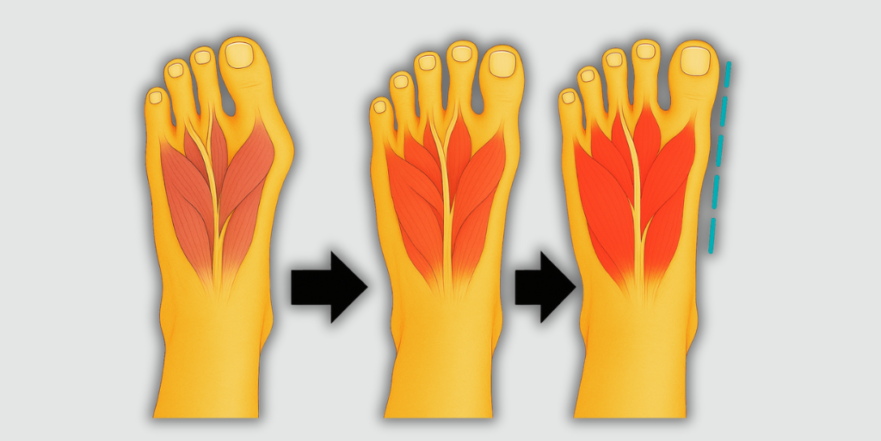
Today, we’re tackling a problem that affects more than 65 million Americans, yet remains one of the most misunderstood musculoskeletal issues: bunions. If you’re dealing with that painful, bony bump at the base of your big toe, you might feel like surgery is your only option. But what if I told you that for many, the fixes are surprisingly simple and within your control? This isn’t just about managing pain; it’s about restoring the natural function of your feet, which form the very foundation for your entire body.
Bunions, known in the scientific world as “hallux valgus,” are more than just a cosmetic issue. They are a clear sign of a dysfunctional foot. This condition occurs when your big toe gets pushed out of its natural, straight alignment, causing the joint at its base to shift and protrude. This misalignment can lead to chronic inflammation, discomfort, and pain during simple activities like walking, let alone any form of exercise. In this article, we’re going to dive deep into the three primary causes of bunions and then walk you through a practical, five-step plan to correct the issue, alleviate your pain, and get you back on your feet, feeling strong and stable.
Key Takeaways
- Bunions Are Not Just Genetic: While there can be a hereditary component, bunions are primarily caused and exacerbated by lifestyle factors, particularly your footwear and movement patterns.
- Three Main Culprits: The most common causes of bunions are restrictive footwear with a narrow toe box, poor ankle mobility (specifically in dorsiflexion), and acquired flat feet, or “fallen arches.”
- You Can Take Control: A natural, non-invasive approach can be highly effective. The five-step plan involves choosing wider shoes, using toe spreaders, wearing anatomically shaped socks, improving ankle mobility, and performing specific foot-strengthening exercises.
- Consistency is Key: Realigning your feet is a process. Just as the problem developed over time, correction requires consistent effort. However, by addressing the root causes, you can achieve lasting relief and prevent future issues.
The 3 Hidden Causes of Your Bunions
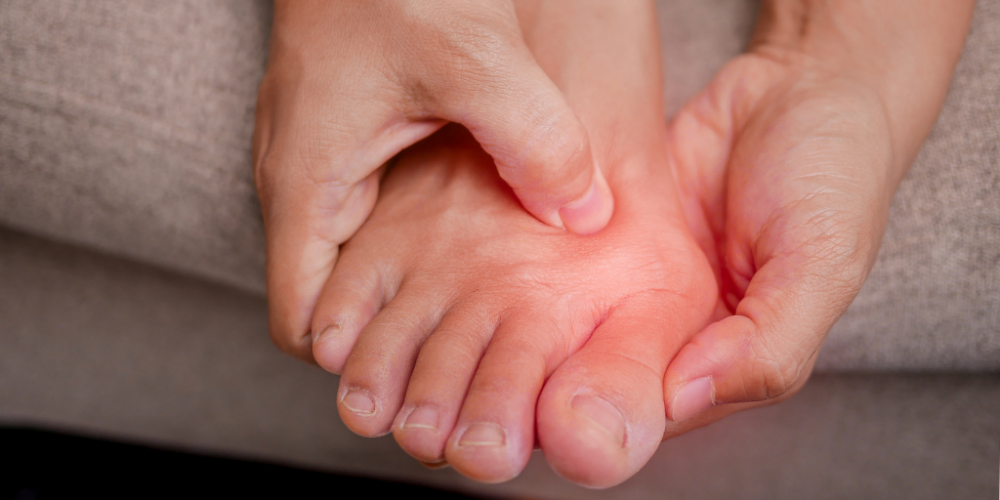
Before we can fix the problem, you need to understand what’s causing it. It’s rarely just one thing, but rather a combination of factors that force your big toe out of its proper place. Let’s break down the three main culprits.
1. Your Shoes Are Forcing Your Toes Out of Alignment

This is, without a doubt, the single greatest contributor to bunions. Take a look at the shoes you wear every day. Do they have a pointy or narrowly rounded toe box? While this design might be considered fashionable, it’s a disaster for your foot’s anatomy. Your toes are designed to splay, or spread apart, to grip the ground and widen your base of support. This is crucial for balancing your entire upright body. Modern footwear, however, completely ignores this fundamental need.
These narrow toe boxes squeeze your toes together, preventing them from spreading naturally. The big toe, pressed firmly against the side of the shoe, bears the brunt of this design flaw. Over months and years, your big toe will begin to conform to the shape of the shoe, leading to the misalignment we call a bunion. Think about how incredibly adaptable your body is. When you break a bone, a doctor puts it in a cast to force it to heal in the correct alignment. Your shoes act like a cast in reverse, slowly but surely forcing your foot into an unnatural, dysfunctional shape. If you spend enough time in these shoes, your feet will conform to them.
2. Tight Ankles Are Wreaking Havoc on Your Feet
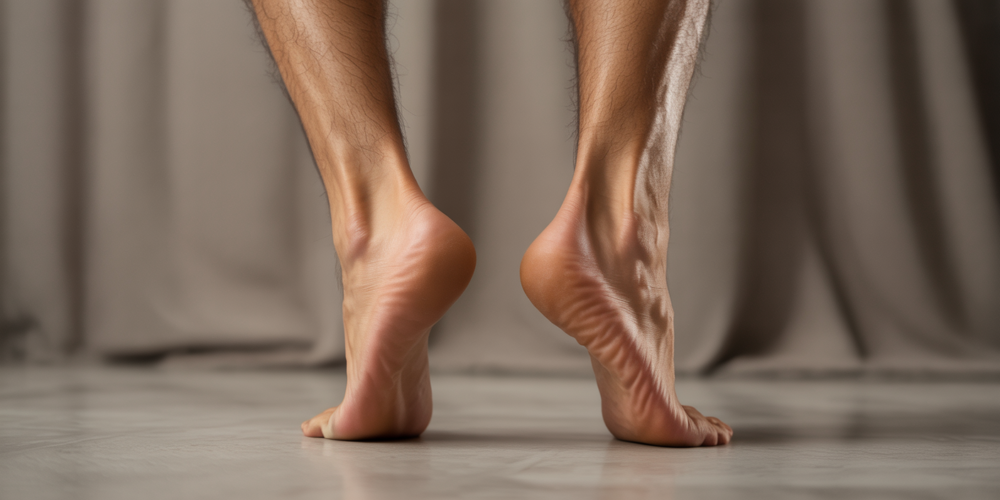
The next major cause is poor ankle mobility, specifically a lack of dorsiflexion. Dorsiflexion is the movement of drawing your toes up toward your shin. This motion is critical in your walking gait. As you take a step, just before your back foot lifts off the ground, your ankle needs to bend forward. This allows you to take a full, efficient stride. Without it, you’d be stuck shuffling your feet.
So, what happens when your ankles are tight and can’t dorsiflex properly? Your brain, in its quest for efficiency, will find a way to get that range of motion from somewhere else. The most common compensation is to turn your foot outward, collapse your arch, and essentially use your foot’s arch as a second ankle. This “duck-footed” walking pattern may keep your stride length normal, but it comes at a steep cost. With every single step you take, you place extreme sideways loading force onto your big toe. Instead of flexing forward naturally, your toe is being pushed sideways, creating the exact valgus strain that forms a bunion.
3. Fallen Arches Shift Your Entire Foot’s Foundation
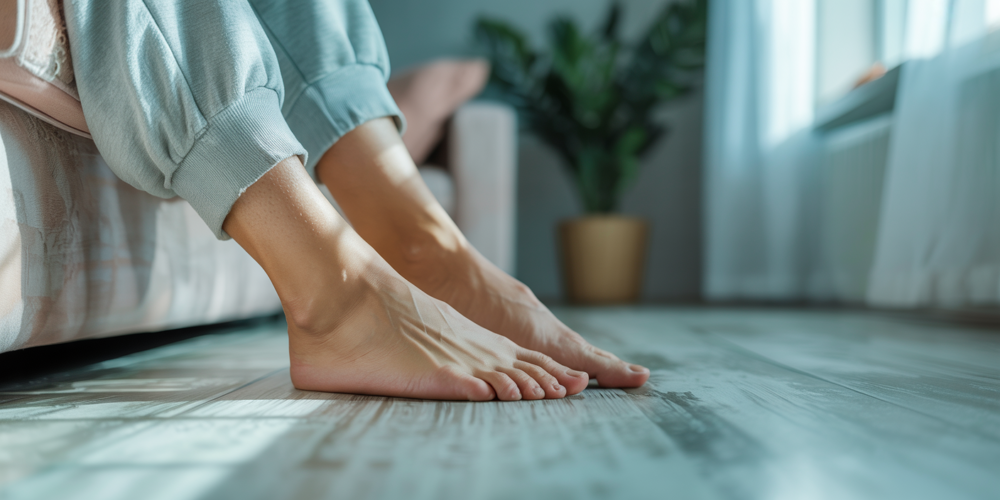
The final major cause is flat feet, particularly acquired flat feet, also known as “fallen arches.” The shape of your arch dictates how weight is distributed across your foot. When you have a healthy, prominent arch, your weight is distributed along the outside of your foot in a convex shape. This loading pattern naturally keeps your big toes aligned and pointing straight forward.
However, when your arch collapses, the entire dynamic changes. Your weight distribution shifts to the inside of your feet, creating a concave loading pattern. This new pattern of force actively pushes your big toes away from each other and outward, into that misaligned bunion shape. Fallen arches and bunions often go hand-in-hand because one directly contributes to the other, creating a vicious cycle of foot dysfunction.
Your 5-Step Plan to Reclaim Healthy Feet
Now that you understand the causes, let’s get to the solution. This five-step plan is a multi-faceted approach designed to address each of the root causes we’ve discussed. By implementing these steps, you can begin to resolve these issues and improve the alignment of your feet.
1. Step 1: Free Your Feet with the Right Footwear

Your first and most crucial step is to select shoes with a toe box that is wide enough to accommodate the natural width of your forefoot and toes. We are strong advocates for “barefoot” or minimalist shoes, which are designed to protect your feet from the elements without altering your posture or blocking sensory feedback from the ground. A key feature of any well-designed shoe is an anatomical toe box that allows for natural toe splay.
Here’s a simple test: take one of your current shoes, flip it over, and place your foot on top of the outsole. Does any part of your foot, especially your toes, spill over the edges? If so, that shoe is too narrow. You can also perform this test by removing the insole and standing on it. If your toes spread out past the edges of the insole, it’s a clear sign that the shoe is squeezing your foot into that bunion-forming shape. Your first action item is to choose footwear that is wide enough to allow your toes to live and move as nature intended.
2. Step 2: Actively Realign Your Toes with Spreaders
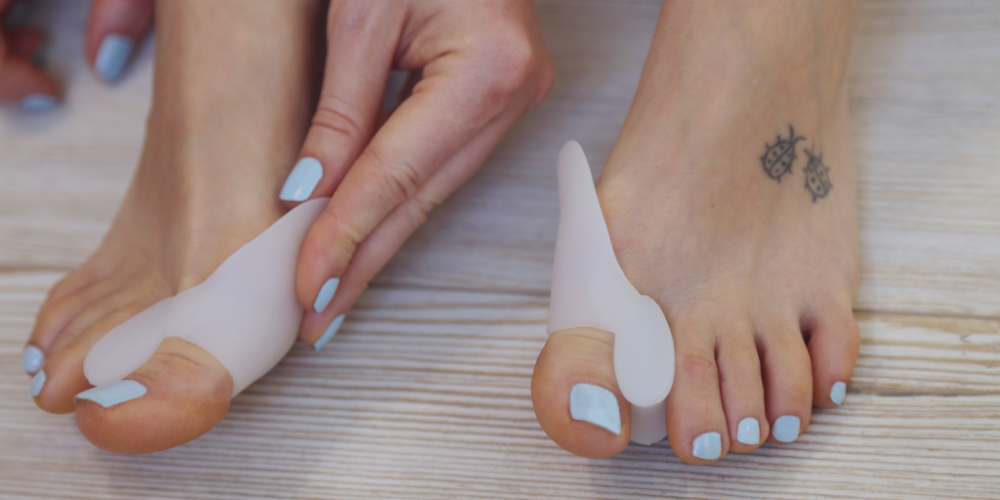
Once you have a bunion, simply switching to wider shoes may not be enough to fix it. Your toes have been “trained” to stay squeezed together. You need to actively nudge them back into proper alignment. This is where silicone toe spreaders come in. These small, flexible accessories fit between your toes, gently separating them and pushing the big toe back toward a straight position.
A 2017 study powerfully demonstrated their effectiveness. Researchers took two groups of people with moderate to severe bunions. Both groups were given wide, flat shoes. However, one group was also instructed to wear silicone toe spreaders for a few hours each evening. After 12 months, the group using the toe spreaders showed a significantly greater improvement in their bunion angle. In fact, the group that only changed their shoes actually saw their bunions worsen on average. This tells us that we need to actively retrain our toes to spread out and fill the space in our wider shoes.
3. Step 3: Don’t Let Your Socks Sabotage Your Progress
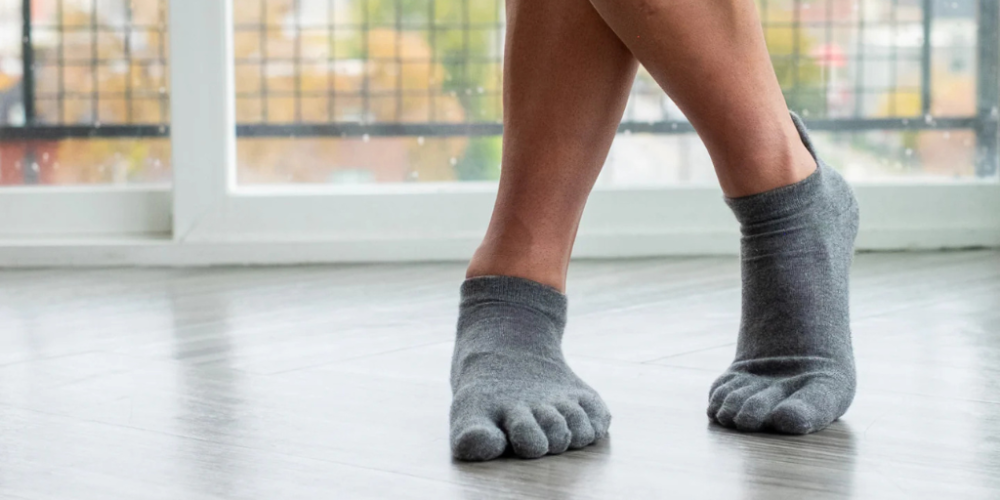
This might seem minor, but it’s an important piece of the puzzle. Most conventional socks, just like shoes, have a tapered, rounded shape at the front. They squeeze your toes together, undoing the good work of your wider shoes and toe spreaders. To overcome this, you can buy socks that have individual compartments for each toe. At first, the feeling of material between your toes might feel strange, but you’ll quickly get used to it and appreciate the freedom of movement it provides. It allows your toes to wiggle and spread independently, which is their natural state.
4. Step 4: Unlock Your Ankles to Improve Your Gait
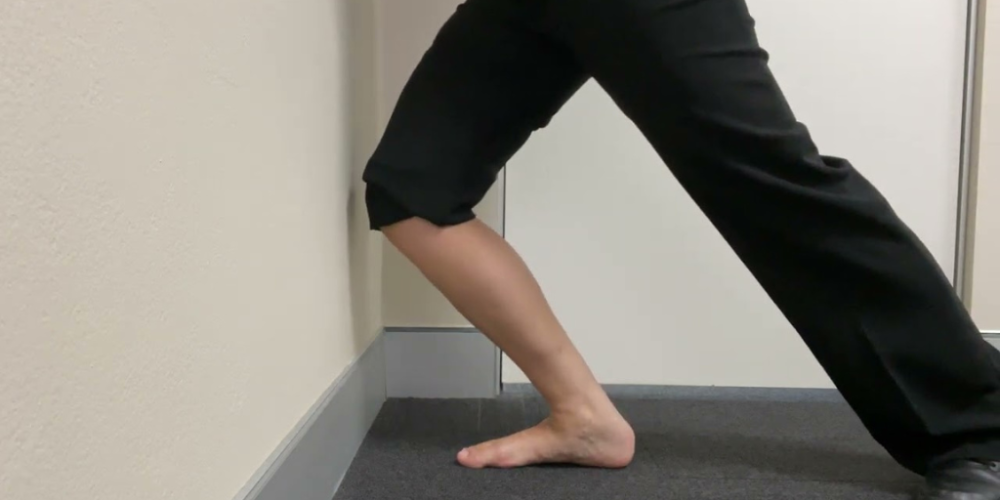
As we discussed, tight ankles lead to a compensated walking pattern that puts bunion strain on your big toe. To fix this, you need to improve your ankle’s ability to dorsiflex. The best way to do this is to practice the exact position of restriction. Here’s a simple and effective stretch: take an exaggerated step forward into a lunge position, but keep your back heel firmly planted on the ground. If you have tight ankles, you’ll feel your back foot wanting to spin out—resist this and focus on keeping it pointed straight ahead. Pressing your back toes into the ground will help. Now, slowly bend your front knee forward. You should feel a nice, deep stretch all the way up the calf of your back leg. Hold this position to gently and safely increase your ankle’s range of motion over time.
5. Step 5: Rebuild Your Foundation with Foot-Strengthening Exercises
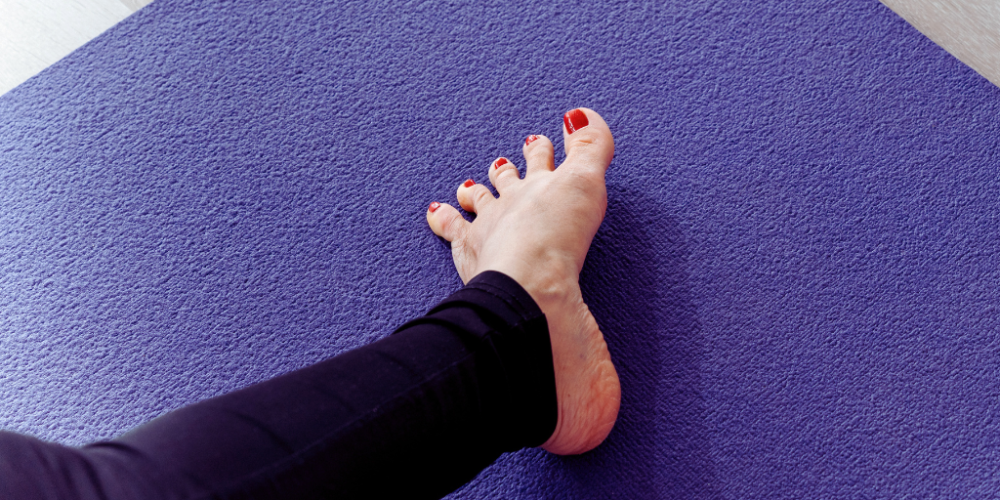
Finally, you need to build up the intrinsic muscles of your foot to support a healthy arch. The most primitive and fundamental foot exercise is one you can do anywhere, anytime. Simply spread your toes as far apart from one another as you possibly can, and then squeeze them together with a good amount of effort. This simple action is a litmus test for your foot health; many adults find it incredibly difficult because years of confinement in shoes have caused them to lose control over these muscles. It’s a classic case of “use it or lose it.” While you’re relaxing on the sofa, practice this simple toe-spreading-and-squeezing exercise to slowly regain mobility, strength, and control over your feet.
A Final Word of Caution
This five-step plan can be incredibly effective for most people. However, if your bunion has progressed to the point where arthritis has developed in the joint, some of these methods might not be suitable. In these more extreme cases, it’s best to seek out a good podiatrist. I would personally recommend finding a professional who looks beyond just prescribing an orthotic or suggesting surgery, but rather one who is dedicated to helping you identify and resolve the root cause of your problem.
Conclusion
Your journey to healthier feet and a pain-free life is entirely within your grasp. Bunions are not a life sentence. By understanding their true causes—restrictive footwear, poor mobility, and weak arches—you can see that the solution lies in reversing those factors. By committing to this five-step plan, you are not just treating a symptom; you are rebuilding your body’s foundation from the ground up. Be patient, be consistent, and you will be amazed at the positive changes you can make for your foot health and overall well-being.
Source: Barefoot Strength

